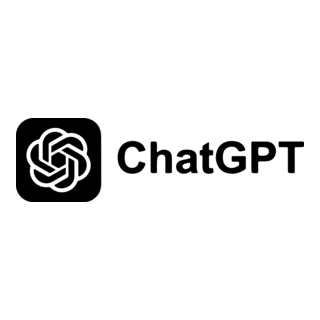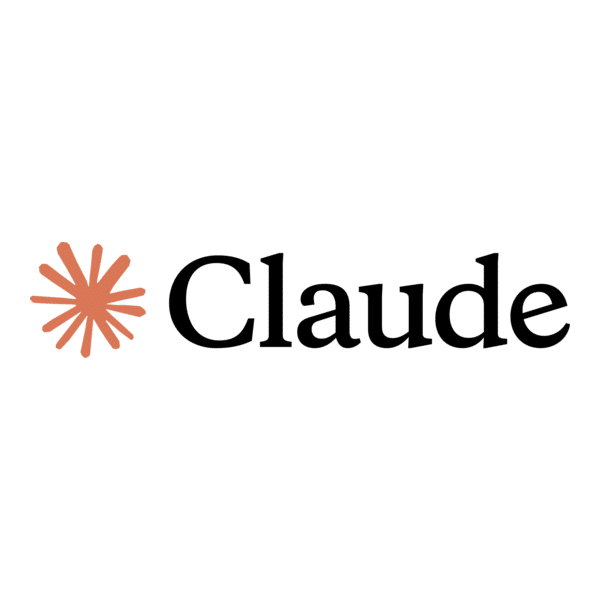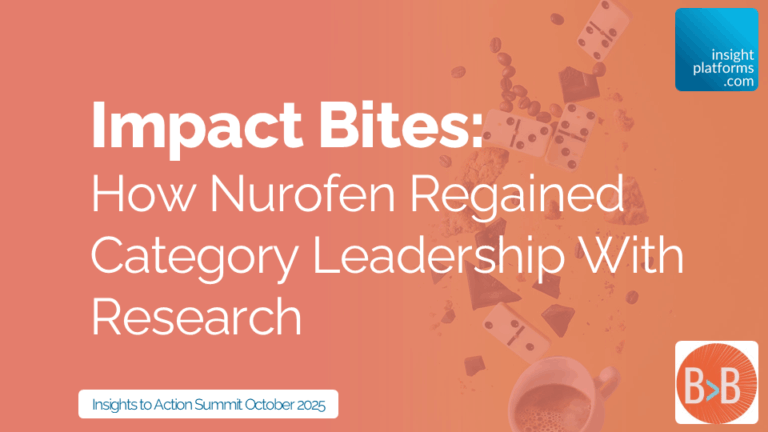
Why RORI Might Save Your Insights Job
By Bigger than Biscuits
- article
We originally presented these mini case studies at the Insight Platform’s Insights to Action Summit in October 2025. If you prefer watching to reading, the short videos are all free to watch here:
Proving Return on Research Investment
We have a problem with how our industry talks about itself.
Or rather, how it does not talk about itself.
The UK’s Market Research Society often quotes that our industry is worth about nine billion pounds, roughly the size of the biscuit sector. But here is the issue with that comparison: nine billion only tells you how much money is spent on research, it says nothing about what that spend delivers.
If you are a CMO, CFO, or CEO, knowing how much gets spent on research is mildly interesting at best. What those stakeholders really want to know is what that investment gives them in return. And we believe no one in our sector is consistently demonstrating this value, at least not in a way that resonates with the people who control the budgets.
That is why we created Bigger Than Biscuits.
The problem we are trying to solve
Our colleagues in advertising and marketing have built robust evidence bases and promote their impact relentlessly. Think of the seminal work in The Long and The Short of It, the IPA Effectiveness Awards, the creative dividend research from System1, and the work Andrew Tindall has championed. Every year, they gather at the Cannes Lions Festival to celebrate their achievements and remind everyone how valuable they are.
We do not do this as a sector. At best, we organise the occasional award ceremony and maybe a one-day conference at a modest London hotel. Yet we are part of that same marketing story. We are the people who create the culture of customer centricity that 73% of executives say they want their businesses to have. We uncover truths about consumers that feed innovation pipelines, shape effective advertising, and determine successful products. We advise on pricing, features, and packaging. We help businesses de-risk decisions.
We know this. Mark Ritson knows it. But if we do not tell this story ourselves, no one else will.
The IPA Bellwether report, which surveys about 300 CMOs from roughly 1,200 companies every quarter, provides a sobering reality check. These executives are asked whether their marketing budgets are going up, down, or staying the same, and what they plan to spend that budget on in the year ahead.
In nine of the last eleven quarters, CMOs reported that their overall marketing budgets were increasing. But for research budgets, the picture is troubling. Research budgets were up more than they were down in just three of those eleven quarters. During COVID-19, market research budgets were down for eight consecutive quarters. Two years.
Where are CMOs putting their money instead? The data shows they are deprioritising investment in research in favour of activities they believe can more reliably drive short-term impact, such as events, direct mail, and sales promotion.
This is not good news. We can question the methodology or debate the nuances, but if evidence matters to us, we need to be worried about what this data is telling us.
We need a story about commercial impact
The truth is, we do not just need a better story. We need a story. We have not effectively communicated to anyone outside our sector how impactful our work is. We need to start persuading CMOs, CFOs, and CEOs that research is worth investing in by telling them a story that makes sense to them. That story must be about commercial impact and financial return.
This is where you come in.
Three stories that prove the point
Let us show you what we mean with three brief examples from our growing collection of stories.
Primark: How research synthesis turned £5,000 into £1 million profit
Back in 2019, Primark faced an unusual challenge. While sales across the Eurozone were up, like-for-like sales in Germany were bucking the trend. For a brand accustomed to strong growth, this was unfamiliar territory.
The business had many hypotheses about what was causing the problem, but it needed an impartial, apolitical view. Enter Dan Young from Shed Research, who took a refreshingly practical approach. Rather than commissioning new research, SHED helped Primark assimilate all the insight it already had to build a single version of the truth. They revisited past research, drew on external data, identified gaps, and recommended what needed to happen next to address the Germany problem.
The summary was used by the new German leadership team to make swift decisions. It led to Primark improving its in-store experience and investing in above-the-line advertising for the first time in the company’s history. The result? Declining German sales were reversed.
A small, four-figure investment in revisiting and repurposing existing research played a significant role in turning a sales decline into the equivalent of £1 million in incremental profit. That is a 40-to-1 return on research investment.
Nurofen: How understanding the emotional side of pain reversed years of decline
Between 2016 and 2019, Nurofen’s sales declined steadily, even as the category around it grew. The brand needed insight that could change its trajectory.
Research revealed something the category had overlooked. In a market dominated by rational product claims, the research showed that pain is emotionally draining too, and that it affects women disproportionately. This insight became the foundation for a bold strategy.
Nurofen invested £3 million in researching the Gender Pain Gap. The brand created the first-ever annual Gender Pain Gap Report and rolled out gender bias training to pharmacists across the UK. The initiative repositioned Nurofen from a functional product to a brand that understood and addressed a real societal issue.
The commercial impact was clear. Category share rose. Brand trust and relevance increased. Value perception completely turned around. The sales declines of 2016-19 were not only stabilised but reversed. By 2023, sales increases were equivalent to an extra £15 million each year. That is a 4-to-1 return on research investment.
The Hundred: How a five-year research partnership built a £1 billion sports brand
This is a story about the long game. Since 2018, Craft Human Intelligence has worked with the England and Wales Cricket Board on an ambitious project to secure the future of cricket in England.
Craft played a pivotal role in imagining, designing, making the case for, developing, and evaluating a revolutionary new cricket competition and entertainment brand called The Hundred. This was not a one-off project but an ongoing research partnership that shaped the brand from concept through launch and beyond.
In early 2025, The Hundred was valued at £1 billion. A partial sale of the eight team brands generated over £500 million of capital for cricket in England. The research that helped shape this brand delivered £500 of value for every £1 invested. That is a 500-to-1 return on research investment.
These three stories demonstrate something important. You do not need a massive research budget to generate compelling returns. Primark’s story came from a four-figure investment in synthesising existing insight. What you do need is research that connects to real business decisions and commercial outcomes.
What we are asking you to do
We believe everyone in our industry has a story to tell, and Bigger Than Biscuits is here to help you tell it. We have already gathered stories that demonstrate the commercial value of research; documented how Primark used research insights to drive significant business outcomes; shown how Nurofen regained category leadership through research-led decision making; and tracked how the England and Wales Cricket Board used a five-year research relationship to build a successful new cricket format, The Hundred.
These stories show that it is reasonably straightforward to take some numbers, apply sensible assumptions, and derive figures that make compelling reading for a CFO. Numbers that clearly demonstrate research can pay for itself many times over.
Now we need your stories.
If you already have a story to share, we want to see it. If you think you have something but are not entirely sure, contact us, and we can discuss it. And if you think you do not have anything, which we seriously doubt, follow us on LinkedIn and help amplify the stories we do share by liking, commenting, and sharing our posts.
Overcoming the barriers
We know what you are thinking. This is where our sector gets self-conscious and introverted. You are probably worrying about three things right now.
Confidentiality. If you cannot share brand names, we can work with de-branded stories. They are not as powerful, and you lose some credibility, but they still work. Alternatively, choose a story from a few years ago or from a previous role. You might also consider recruiting an internal champion higher up in your organisation who can help smooth the approval process.
Time. We understand you are busy, but this is genuinely important, both for the sector and for you personally. The story may already exist in some form. Award submissions are often a great source of this information. And we can help. Reach out and let us see if we can assist you in pulling it together.
Data and numbers. We are not looking for precision to the twelfth decimal point. Rough figures are fine. You can use modest assumptions or data already published in your company’s annual report. You can disguise real numbers by showing percentage uplifts without revealing the base figures. There are ways to make this work, and we do not want data concerns to become a blocker.
Here is something to keep in mind. There are two occasions when we all tell good commercial stories, one is when we enter awards, the other is when we interview for a significant new role and are asked to describe a time when our work had direct commercial impact. In that moment, nobody goes blank. Nobody says they cannot think of anything. Everyone comes up with a story.
If you can answer that interview question, you have a story to tell.
Send us your RORI story
Do you have a story you could share? Even if it’s just an outline, we’d love to know about it. You can contact us using this form, and we’ll get in touch.
Join us
This is our crusade, and we are inviting you to be part of it. We are not making money from this. We came together because we care passionately about our industry and believe we have a story that needs to be told. A story about value, impact, and return on investment. A story that is bigger than biscuits.
The form below is your opportunity to share your story with us. Together, we can be louder and prouder about the contribution market research makes to business success.
We originally presented these mini case studies at the Insight Platform’s Insights to Action Summit in October 2025. If you prefer watching to reading, the short videos are all free to watch here:









